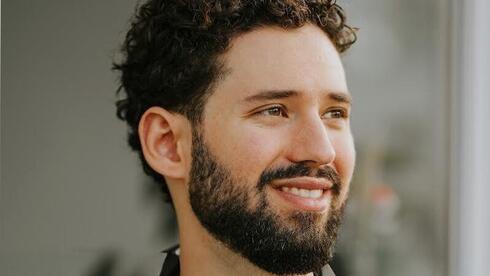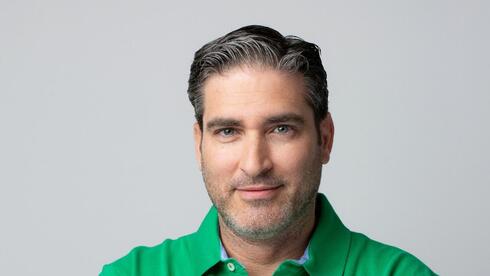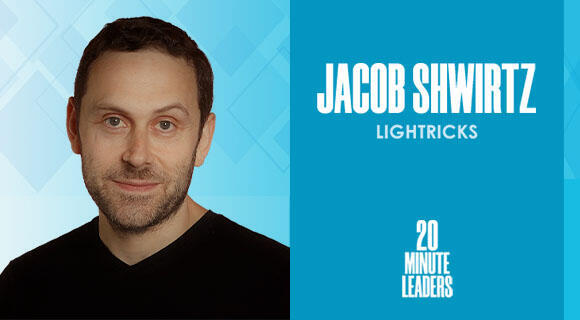
20-Minute Leaders
“We are seeing the rise of the voice of the individual.”
In today’s creator economy, the stories and voices of individuals are growing in importance over brand voices, says Jacob Shwirtz, leader of Content and Creators at Lightricks.
In today’s creator economy, the stories and voices of individuals are growing in importance over brand voices, says Jacob Shwirtz, leader of Content and Creators at Lightricks. He says consumers have less trust in companies and advertising, so brands need to use influencers to build bridges to their markets. This requires a major change in the marketing mindset, he explains, as companies can’t control everything in an influencer relationship. Shwirtz shares that the more a brand tells a creator what to do, the less influence that creator will have with their audience, so companies need to let go and trust. While running ads can still be effective, he says that to be part of pop culture and rise to the next level, companies need to connect with creators with cultural influence. When these connections are done well, Shwirtz says it is good for the audience, the influencer, and the brand.
Briefly, connect the dots looking back about your journey so that I can understand how you entered this creator economy space.
I've been in it from the beginning before titles for it existed. I got online really early. At college, I studied film production. I always loved storytelling, always interested in how companies, how people share their stories and connect with people online. Now, the shift from brand voices to individual voices seems like a natural evolution. Creators are just people telling stories, and now technology allows them to connect with bigger audiences. At the same time, people don't necessarily trust companies and don't want to just get ads from companies. I found a way to make a career of all the above, through places like MTV, VH1, and Discovery to companies that were trying to be a big part of culture, like WeWork and now at Lightricks, which is making tools used by millions of creators.
What are we seeing unfold in the creator economy in 2022?
We are seeing the rise of the voice of the individual and the tools available to help them tell their stories. Whether it's niche audiences or the biggest celebrities, musicians, and others. It's a challenge for companies to go beyond what they are used to doing—which is marketing strategy, buying ads, writing copy for ads—and figure out how to tap into this space, how to bridge their story with the story of individual creators. There's a whole revolution where you can't control everything. The more you try to dictate to an influencer, the less they will be able to influence their audience.
What are the real pain points that a creator goes through and the shifts that are happening for them today?
The number one job kids want to be when they grow up is an influencer now. What does that mean when you only have a hundred followers and you want to get to 10,000 followers? It's a very different pain point than when you have five million followers and a staff and are negotiating brand deals for hundreds of thousands of dollars. Each creator has their own way of evolving. Some might want to move behind the camera and build businesses around it. Some want to be the star and use their fame to springboard into being a movie star or a TV presenter.
In terms of the way they are creating their content, are there major shifts that are happening?
It's shifting every single day. We see now all the changes happening at Twitter. We see bigger platforms, like Snapchat and TikTok, competing with each other. YouTube is maybe the most stable and long-term place for creators to monetize themselves. The marketplace is changing so much. Creators are working very hard to find other ways to monetize beyond brand deals because maybe that's where they make the most money, but it's the hardest. They don't want to be seen as selling out. They don't want to just have ads in their posts. So more and more ways, whether it's merchandise or subscriptions or micro payments.
What shifts are you seeing in terms of the way the companies are thinking?
It's challenging. You can't see working with influencers in a very scalable way. Each of these people are individuals. What you can expect out of each creator is very different, not necessarily the same metrics as you see with performance marketing. It's a very different change in mindset. Brand marketers are learning to let go more, trust the creators. If you actually want them to influence their audience, you have to trust their instincts. It takes a lot of manpower, a lot of human touch. There's so much psychology. These are individual people. They might have a bad day; they might get burned out. The Facebook ad manager never gets burned out.
How are these relationships forming? Is it on an individual basis or are there platforms?
All the above. There are a lot of middle men online platforms. Obviously, lots of brands send direct messages to lots of creators, and vice versa. Working with brands is just one way of monetizing as a creator. It's a whole career path.
There's so much more than just the "on-air" talent. You see now more and more job postings for things like YouTube thumbnail creator. There's going to be more and more job titles we see in this economy.
If you are looking at your own journey within the creator economy, how have you grown?
Growing up in New York, watching MTV, at that time that was the center of pop culture, getting a chance to work there was really awesome. I got to work with Tila Tequila, the number one person on MySpace, because MTV gave her a show. Taking someone like that with their digital influence to promote a show, it was a really new concept. Over the years, seeing how there started being more and more digital marketing commitments in contracts with talent for TV so that you are not just casting an actor but you are also analyzing their social media.
On the brand side, really bringing that in also from the very beginning, really acknowledging the limits of what a corporate social media account can do. You need these bridges to your target market. If all you are doing is running ads, that can get you far. But you are not going to be a company that's part of pop culture, that's on the tip of people's tongues. Connecting with people who have influence in culture is what companies need to do to go to that next level.
What do you do within Lightricks?
These days we focus a lot on our relationships with talent of all kinds, from small creators that we work with to bring in content for inside our app experiences as well as on our social media. And all the way up to bigger influencers and celebrities. I love going deeper with these relationships and building more broad-based, long-term ambassador relationships.
What did you grow to understand about the motivations of the creators and how you can support them?
It is about these buzzwords, about authenticity and integrating into the influencer. By developing much broader long-term relationships, then the partner can start to really integrate the brand into their content. Then their fans see, "Oh, they actually use it. They actually like it." Is it in the background? Is it mentioned in other ways? Are they engaging with the accounts on social media in ways that you just do as a normal human? That's really what we strive to do and what I like to do.
A big pain point with the influencer is always to find that connection point, that bridge between the brand messaging and their audience. It only works when it's win-win-win for everyone. When I'm working with someone, it's not about delivering a speech that I gave them about the brand. I just want them using the product. Maybe wearing the logo every now and then or something in the background. That's a lot more natural. Maybe their audience will actually be influenced, where just doing one or two cheesy posts they won't be influenced.
It sounds like it's a much more healthy way of doing a partnership for the creator and the end consumer.
It takes time and money. It takes the right stomach and patience to really build that relationship over time. It can be really nerve-wracking for brands who want to see, "Oh, how many sales did it bring us yesterday?" It might take time to build the relationship. Then next Christmas, suddenly, there's a big boost in sales because people have your brand in mind.
Michael Matias, Forbes 30 Under 30, is a Venture Fellow at Innovation Endeavors as well as investment Venture Partner at Secret Chord and J-Ventures. He studies Artificial Intelligence and Human-Computer Interaction at Stanford University, and was an engineer at Hippo Insurance. Matias previously served as an officer in the 8200 unit. 20MinuteLeaders is a tech entrepreneurship interview series featuring one-on-one interviews with fascinating founders, innovators and thought leaders sharing their journeys and experiences.
Contributing editors: Michael Matias, Megan Ryan















